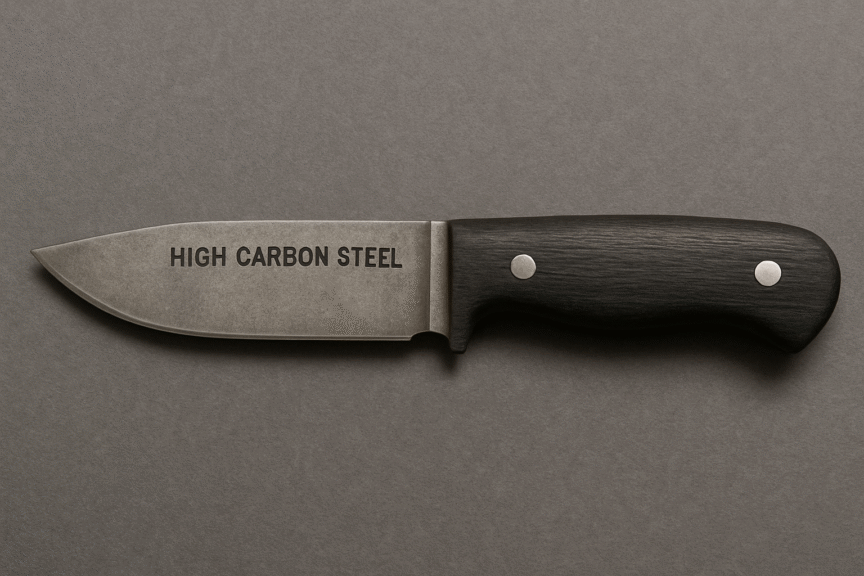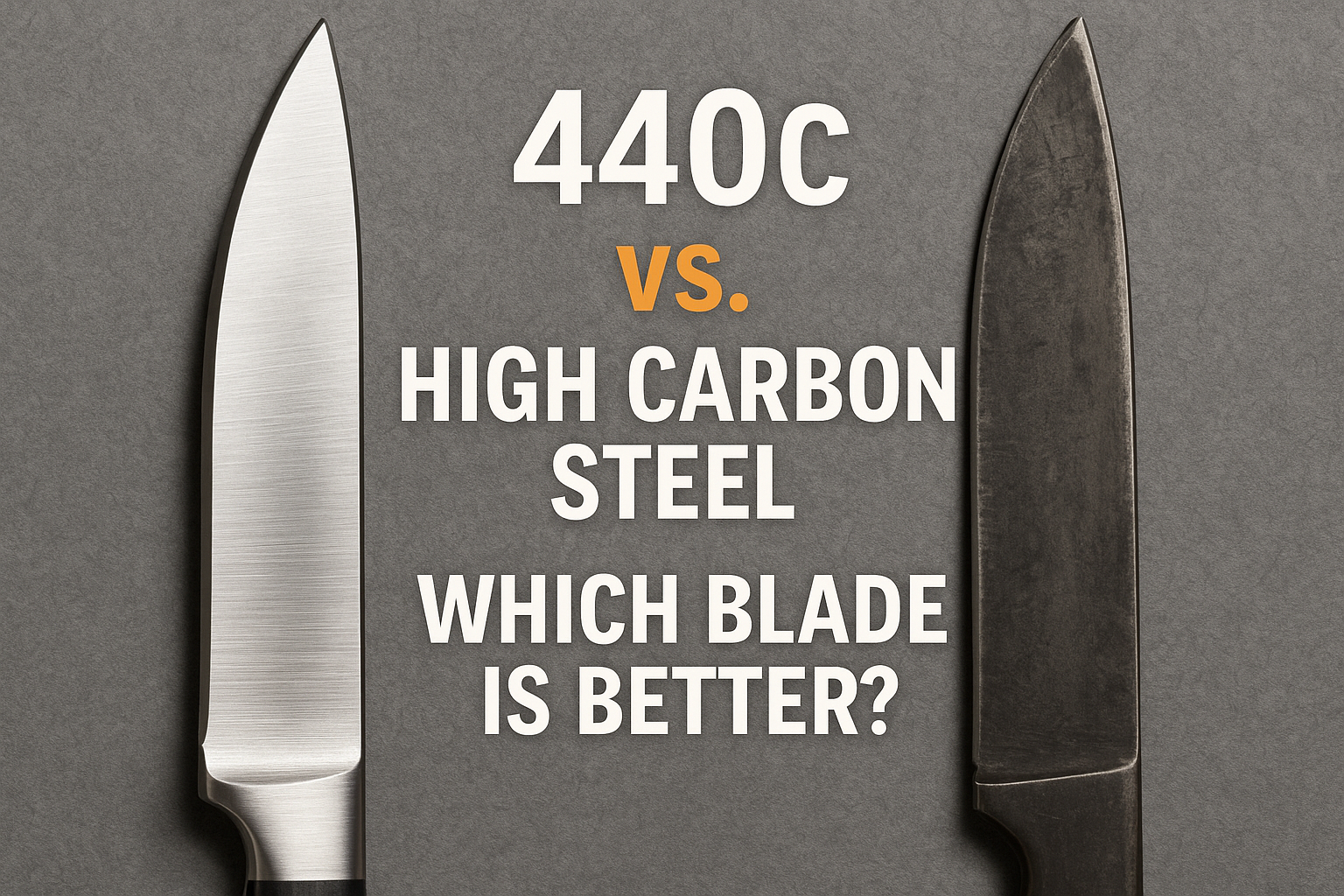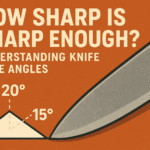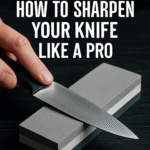When choosing a knife, one of the most important factors is the type of steel used in the blade. Among the many options available, 440C stainless steel and high carbon steel are two of the most commonly debated materials. Both have strong reputations, but each brings different advantages to the table. So, which one is better for your needs? Let’s dive into the key differences, strengths, and weaknesses of 440C and high carbon steel to help you make an informed choice.
Understanding the Basics
What is 440C Stainless Steel?
440C is a high-carbon martensitic stainless steel that contains about 0.95-1.20% carbon and 16-18% chromium. Thanks to this high chromium content, 440C has excellent corrosion resistance, making it one of the most popular choices for knife makers who want a blade that resists rust and staining.
Key Properties of 440C:
- High hardness (can be hardened to 58-60 HRC)
- Good corrosion and wear resistance
- Easy to maintain
- Commonly used in EDC knives, kitchen knives, and surgical tools


What is High Carbon Steel?
High carbon steel, often ranging from 0.6% to over 1.0% carbon content, does not contain significant amounts of chromium (typically below 5%). This means it lacks the corrosion resistance of stainless steels, but it offers superior hardness, edge retention, and toughness, especially when properly heat-treated.
Key Properties of High Carbon Steel:
- Excellent edge sharpness and retention
- Very tough and durable
- Easy to sharpen
- Prone to rust if not maintained properly
Head-to-Head Comparison
| Feature | 440C Stainless Steel | High Carbon Steel |
|---|---|---|
| Corrosion Resistance | Excellent | Requires oiling |
| Edge Retention | Good | Excellent |
| Ease of Sharpening | Moderate | Easy |
| Hardness | High (up to 60 HRC) | Very High (varies by alloy) |
| Durability | Strong | More brittle at higher hardness |
| Maintenance | Low – easy to care for | High – needs regular oiling |
| Best For | Outdoor, kitchen, everyday use | Bushcraft, survival, heavy-duty |
When to Choose 440C Stainless Steel
440C is a fantastic option for those who want a low-maintenance blade that can still perform well. If you’re looking for a kitchen knife, hunting knife, or EDC Knife (Everyday Carry) blade that won’t rust easily and still holds a decent edge, 440C won’t disappoint.
It’s particularly useful in humid or coastal environments where corrosion is a concern. Many modern knives and tools use 440C for its balance between hardness, corrosion resistance, and cost.
When to Choose High Carbon Steel
High carbon steel is the preferred choice for professional chefs, woodworkers, survivalists, and outdoor enthusiasts who prioritize performance over appearance. These blades can take a razor-sharp edge and retain it longer under heavy use.
However, because they rust easily, they require more attention. If you’re okay with oiling the blade after each use and occasionally dealing with a patina (or rust if neglected), high carbon steel will reward you with unmatched cutting power and control.
Which Blade is Better?
There is no one-size-fits-all answer. It depends on your specific needs and how much maintenance you’re willing to perform.
-
- Choose 440C if you want less maintenance, decent sharpness, and good rust resistance.
-
- Choose high carbon steel if you want superior sharpness, better edge retention, and don’t mind extra care.


Final Thoughts
Whether you’re slicing vegetables in the kitchen, carving wood in the forest, or carrying a blade for daily use, understanding the strengths of 440C and high carbon steel helps you choose the right tool for the job.
A blade is only as good as the steel it’s made from—and the way it’s used and cared for. If you’re someone who values reliability and rust resistance, go for 440C. If you’re after raw cutting performance and don’t mind putting in the extra work, high carbon steel is your best friend.
Still can’t decide? Many knife makers now offer hybrid designs or even Damascus steel that blends the best of both worlds. But that’s a topic for another blog post!




